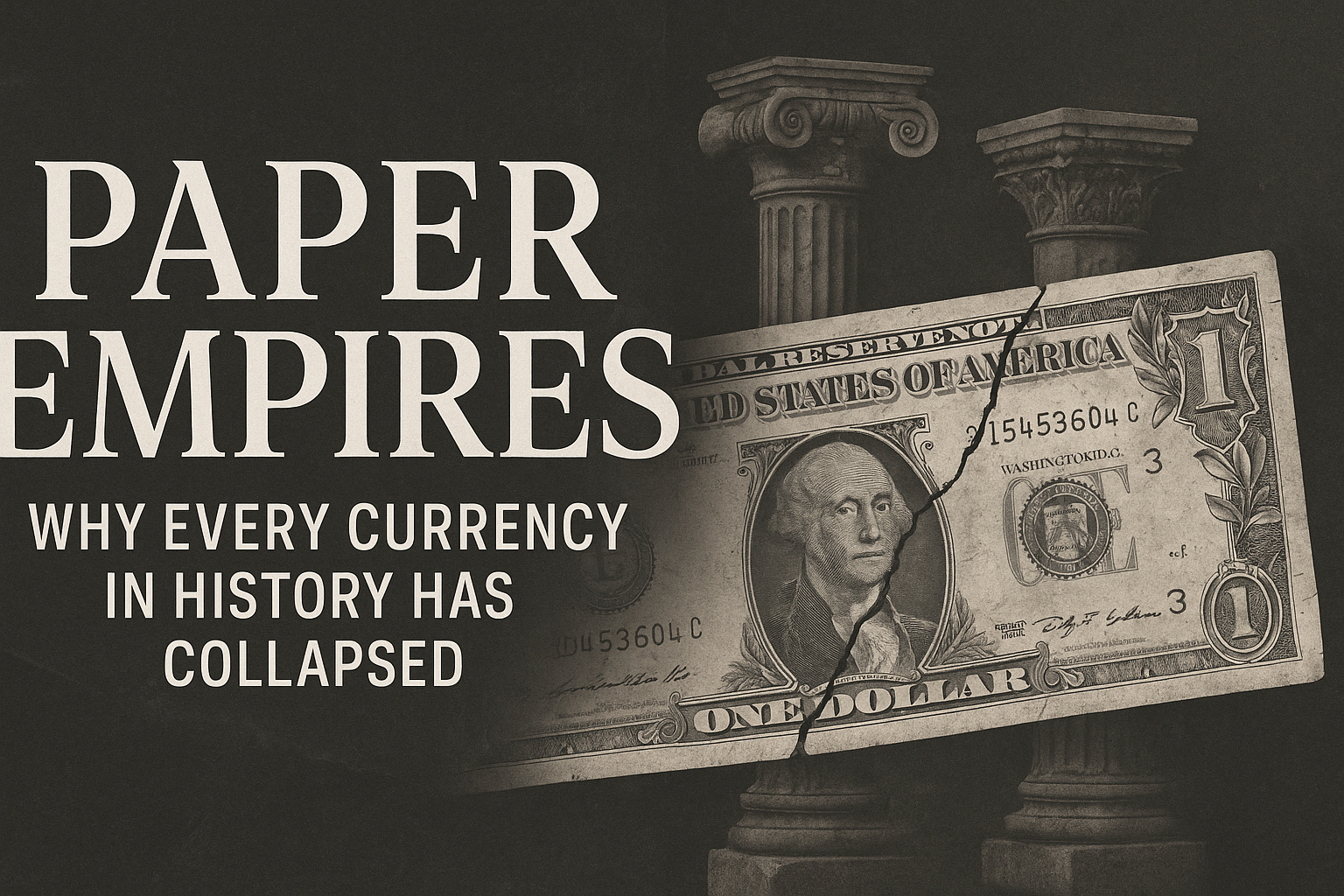Paper Empires: Why Every Currency in History Has Collapsed (Part 2)
Written by Arbitrage • 2025-11-06 00:00:00

If you have not read yesterday's blog post, please read it before continuing here.
The Mathematics of Monetary Failure
Every monetary collapse follows a predictable sequence:
- Prosperity. A nation builds trust through innovation, production, and growth.
- Overreach. It expands militarily, financially, or politically beyond its means.
- Debasement. To sustain that expansion, it prints or borrows more than it can repay.
- Inflation. Prices rise and confidence begins to weaken.
- Collapse. The system resets and a new form of money replaces the old one.
The timeline changes, but the math does not. Debt grows faster than productivity. Inflation erodes purchasing power. Confidence breaks. Voltaire once said, "Paper money eventually returns to its intrinsic value - zero." History has proven him right every time.
Why All Money Dies
The root cause of every collapse is not mechanical; it is psychological. Three forces drive every failure:
- Political Incentives Over Fiscal Discipline: Politicians rarely win elections by promising to spend less. Borrowing feels painless in the short term and disastrous only later. Deficits become permanent, and money printing becomes the default solution.
- Debt Grows Faster Than Growth: Economic growth is linear. Debt growth is exponential. Eventually, interest payments consume the system. The state must choose between default or inflation, and it always chooses inflation.
- Confidence Fades Suddenly: Currencies rarely die slowly. They die suddenly. Trust holds until it doesn't. Once the belief breaks, no policy can rebuild it.
The Dollar's Dilemma
The U.S. dollar has now outlived every historical average for global reserve currencies. It remains dominant - not because it is sound, but because it is still the least broken option. The signs of fatigue are clear:
- The U.S. debt-to-GDP ratio is above 120 percent.
- Interest costs now exceed defense spending.
- BRICS nations are experimenting with gold or commodity-backed trade.
- Countries are quietly reducing their dollar reserves and diversifying into other assets.
Even allies are questioning how long the dollar can remain neutral when it is used as a geopolitical weapon. Empires die slowly, then all at once. The question is not if the dollar will fall, but what will replace it when it does.
The Next Era: A Multipolar Money World
When one monetary empire ends, another begins. History suggests the next system will not revolve around a single dominant currency but a multipolar network of regional systems backed by digital ledgers, commodities, or gold.
The next "money" may not even look like money. It might be programmable, decentralized, or algorithmically scarce. But it will still depend on trust, just like every currency before it.
And one day, that trust will fade too.
Conclusion: The Pattern That Never Ends
Every currency begins as a symbol of strength and ends as a victim of its own success. Rome's denarius, Spain's silver real, Britain's pound, and America's dollar all followed the same pattern: trust, power, excess, and collapse. Money does not fail because of mathematics. It fails because of human behavior. The end of the dollar will not be the end of money. It will simply mark another chapter in humanity's 3,000-year experiment with belief.
Paper empires rise. And in time, they all fall.